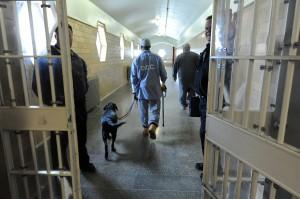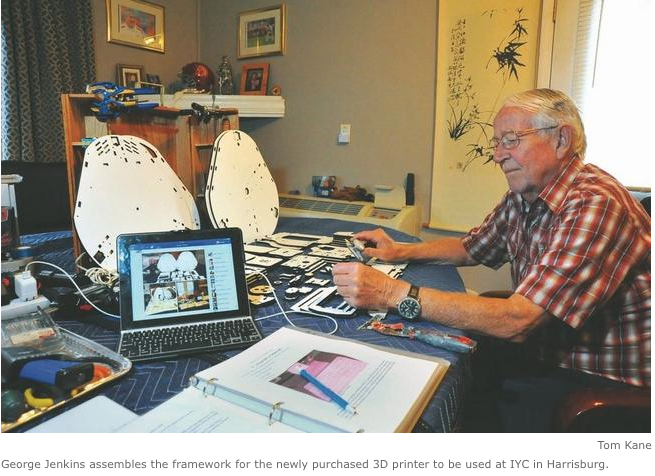 The United States has one of the highest incarceration rates in the world. A number of dedicated groups around the country are working hard to try and understand how to help people who often feel ‘thrown away’ by a society in which they have made mistakes. These types of initiatives range from things such as the Thousand Kites project that uses spoken word to connect poetry written by those in prison and inhabitants of the world beyond their walls to Puppies Behind Bars that works to train inmates to raise service dogs for wounded war veterans and explosive detection canines for law enforcement.
The United States has one of the highest incarceration rates in the world. A number of dedicated groups around the country are working hard to try and understand how to help people who often feel ‘thrown away’ by a society in which they have made mistakes. These types of initiatives range from things such as the Thousand Kites project that uses spoken word to connect poetry written by those in prison and inhabitants of the world beyond their walls to Puppies Behind Bars that works to train inmates to raise service dogs for wounded war veterans and explosive detection canines for law enforcement.
These projects are designed to allow prisoners to understand peaceful modes of expression as well as to feel that they are and can continue to be useful, contributing members of everyday society. In the same vein as these specialized projects and the idea that offering education to those currently inside the criminal justice system, a training program is being offered by a group of volunteers at the Illinois Youth Center (IYC) in Harrisburg. Their idea was that the traditional vocational skills that have been part of many prison education programs needed to be updated so that those who complete the program would have an in demand skill set.
 Vocational education programs around the country have been updating their curricula to acknowledge the increasing importance of advanced manufacturing technologies, and these volunteers decided it was time to bring that to a group of people who could stand to benefit from the necessity of those skills – and, with their successful reintegration into lawful society, would in turn be benefiting their communities.
Vocational education programs around the country have been updating their curricula to acknowledge the increasing importance of advanced manufacturing technologies, and these volunteers decided it was time to bring that to a group of people who could stand to benefit from the necessity of those skills – and, with their successful reintegration into lawful society, would in turn be benefiting their communities.
 The idea was first submitted by a volunteer instructor at IYC, George Jenkins, who suggested that teaching 3D printing skills to the inmates would significantly improve the chances in life that those in IYC have. He explained:
The idea was first submitted by a volunteer instructor at IYC, George Jenkins, who suggested that teaching 3D printing skills to the inmates would significantly improve the chances in life that those in IYC have. He explained:
“The kids will be able to go back to their neighborhoods in South Chicago, East St. Louis or wherever and when the local drug dealer makes his welcome back visit these kids will be able to explain to these local heroes why they no longer need a life in crime. They will be able to show them things they made in prison, things people will buy, like name tags or personalized combs or cell phone covers – imagination is the only limit. The dealers may end up financing these kids in a local shop. The field is exploding.”
This combination of idealization and understanding of the gritty reality faced by these kids creates an interesting opportunity, the success of which will be difficult to predict. Rather than sitting back because of the uncertainty of the outcome, Jenkins and the other volunteer members of his group proposed their idea and on December 12 were given the go-ahead. They are currently working on assembling their first 3D printer and hope that they will be able, through that exercise, to gain an in-depth understanding of the machine that will allow them to not just operate it but truly utilize it.
 In addition, because of strict regulations in the prison system regarding internet connections and the operation of machinery that could potentially produce weapons, there will be a number of unique challenges to be faced as 3D printing is integrated into the vocational education offerings. Software will need to be carefully monitored and repairs to the machines will have to occur on site.
In addition, because of strict regulations in the prison system regarding internet connections and the operation of machinery that could potentially produce weapons, there will be a number of unique challenges to be faced as 3D printing is integrated into the vocational education offerings. Software will need to be carefully monitored and repairs to the machines will have to occur on site.
While it may be naïve to imagine that every student who learns how to use a 3D printer will be able to use her or his strength of character combined with these new skills to say no to other powerful influences operating in their communities, as my grandmother would say, ‘it can’t but help.’ If even one former inmate is able to live out the scenario painted by Jenkins, the benefits will be priceless. From there, maybe the US could turn itself from being the leader in imprisonment to being a leader in the development of the technology savvy work force that is widely acknowledged as being required for successfully approaching the future.
Let’s hear your thoughts on the idea of having 3D Printers in the Illinois Youth Center to help educate the inmates. Discuss in the IYC 3D Printing forum thread on 3DPB.com.
Subscribe to Our Email Newsletter
Stay up-to-date on all the latest news from the 3D printing industry and receive information and offers from third party vendors.
You May Also Like
3D Printing Financials: Fathom Struggles in Financial Quicksand During Critical Transition
Facing a year of key transitions and financial pressures, Fathom (Nasdaq: FTHM) has filed its annual report for 2023 with the U.S. Securities and Exchange Commission (SEC). The document outlines...
Latest Earnings Overview for Australian 3D Printing Firms Titomic and AML3D
Australian 3D printing manufacturing firms Titomic (ASX: TTT) and AML3D (ASX: AL3) reported their financial results for the period from July to December 2023, marking the first half of their...
3D Printing Webinar and Event Roundup: April 7, 2024
Webinars and events in the 3D printing industry are picking back up this week! Sea-Air-Space is coming to Maryland, and SAE International is sponsoring a 3D Systems webinar about 3D...
3D Printing Financials: Unpacking Farsoon and BLT’s 2023 Performance
In the Chinese 3D printing industry, two companies, Farsoon (SHA: 688433) and Bright Laser Technologies, or BLT (SHA: 688333), have recently unveiled their full-year earnings for 2023. Farsoon reported increases...
































